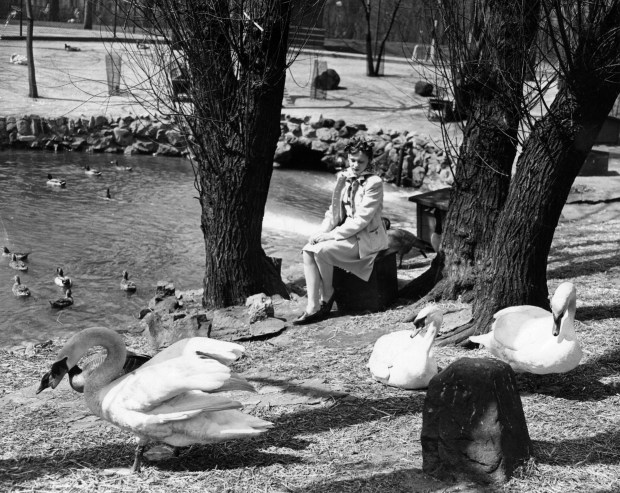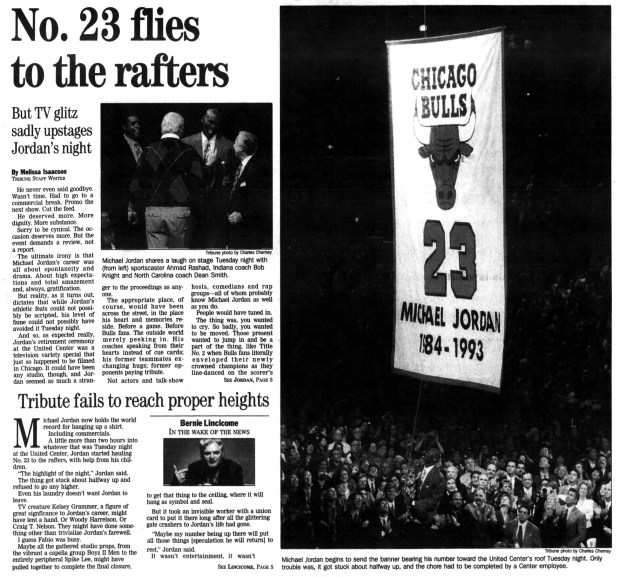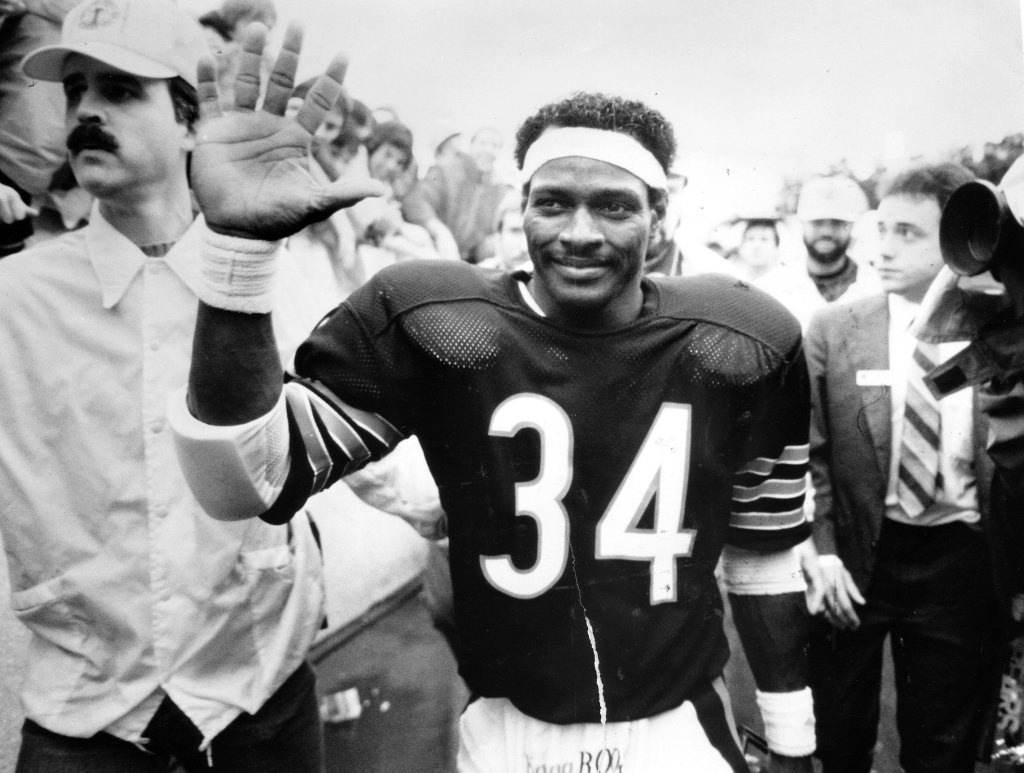Here’s a look back at what happened in the Chicago area on Nov. 1, according to the Tribune’s archives.
Is an important event missing from this date? Email us.
Weather records (from the National Weather Service, Chicago)
- High temperature: 81 degrees (1950)
- Low temperature: 21 degrees (1879)
- Precipitation: 2.74 inches (1985)
- Snowfall: 1.1 inches (1954)
 A woman sits among the birds at the Lincoln Park Zoo Rookery in 1942. (Chicago Tribune historical photo)
A woman sits among the birds at the Lincoln Park Zoo Rookery in 1942. (Chicago Tribune historical photo)
1942: With men serving in the armed forces during World War II, Lincoln Park Zoo offered “the same pay and the same privileges as men” for women looking for jobs for up to 100 jobs offered through the Chicago Park District. Women — who requested work as truck drivers, garage attendants, tractor operators and laborers — applied for these positions through the Park District, many listing “long experience in the care of dogs, cats, and birds” as qualifications.
 John H. Johnson, publisher of Ebony magazine, circa June 25, 1967. (Chicago Tribune archive)
John H. Johnson, publisher of Ebony magazine, circa June 25, 1967. (Chicago Tribune archive)
1945: The first edition of Ebony magazine was published by founder John H. Johnson.
“Much like Bibles have been a mainstay in hotels and motels across America, so was Ebony magazine when it came to Black homes and businesses,” Tribune reporter Darcel Rockett wrote in 2020. “If you’re of a certain age, the Chicago-based publication was just a constant. One never questioned its presence.”
The monthly publication — focused like Life magazine on showing American lives — chronicled the achievements of those in the Black community. The 25,000-copy press run of the inaugural 52-page issue sold out. By its 10th year, the magazine was being read by 500,000 people.
1987: The Chicago Religious Task Force, a national clearinghouse for the sanctuary movement helping Central American refugees, said in a Tribune story that it was planning to urge priests, nuns and “employers to break the law by hiring undocumented workers” in the Chicago area, where tens of thousands of the immigrants lived.
 Michael Jordan’s No. 23 jersey was retired by the Chicago Bulls on Nov. 1, 1994, at the United Center. (Chicago Tribune)
Michael Jordan’s No. 23 jersey was retired by the Chicago Bulls on Nov. 1, 1994, at the United Center. (Chicago Tribune)
1994: Michael Jordan’s No. 23 jersey ascended to the rafters in the United Center — though it got momentarily stuck halfway up. A bronze statue of him was also revealed outside the building, but it has since been moved inside the arena.
1999: Chicago Bears Hall of Famer Walter Payton died of bile duct cancer and liver failure at age 45.
“The last 12 months have been extremely tough on me and my family. … Our greatest thanks goes out to the people of Chicago. You adopted my dad and made him yours. He loved you all,” his son Jarrett Payton said.
Walter Payton: The life, career of the Chicago Bears Hall of Famer better known as ‘Sweetness’
Want more vintage Chicago?
Subscribe to the free Vintage Chicago Tribune newsletter, join our Chicagoland history Facebook group, stay current with Today in Chicago History and follow us on Instagram for more from Chicago’s past.
Have an idea for Vintage Chicago Tribune? Share it with Kori Rumore and Marianne Mather at krumore@chicagotribune.com and mmather@chicagotribune.com
